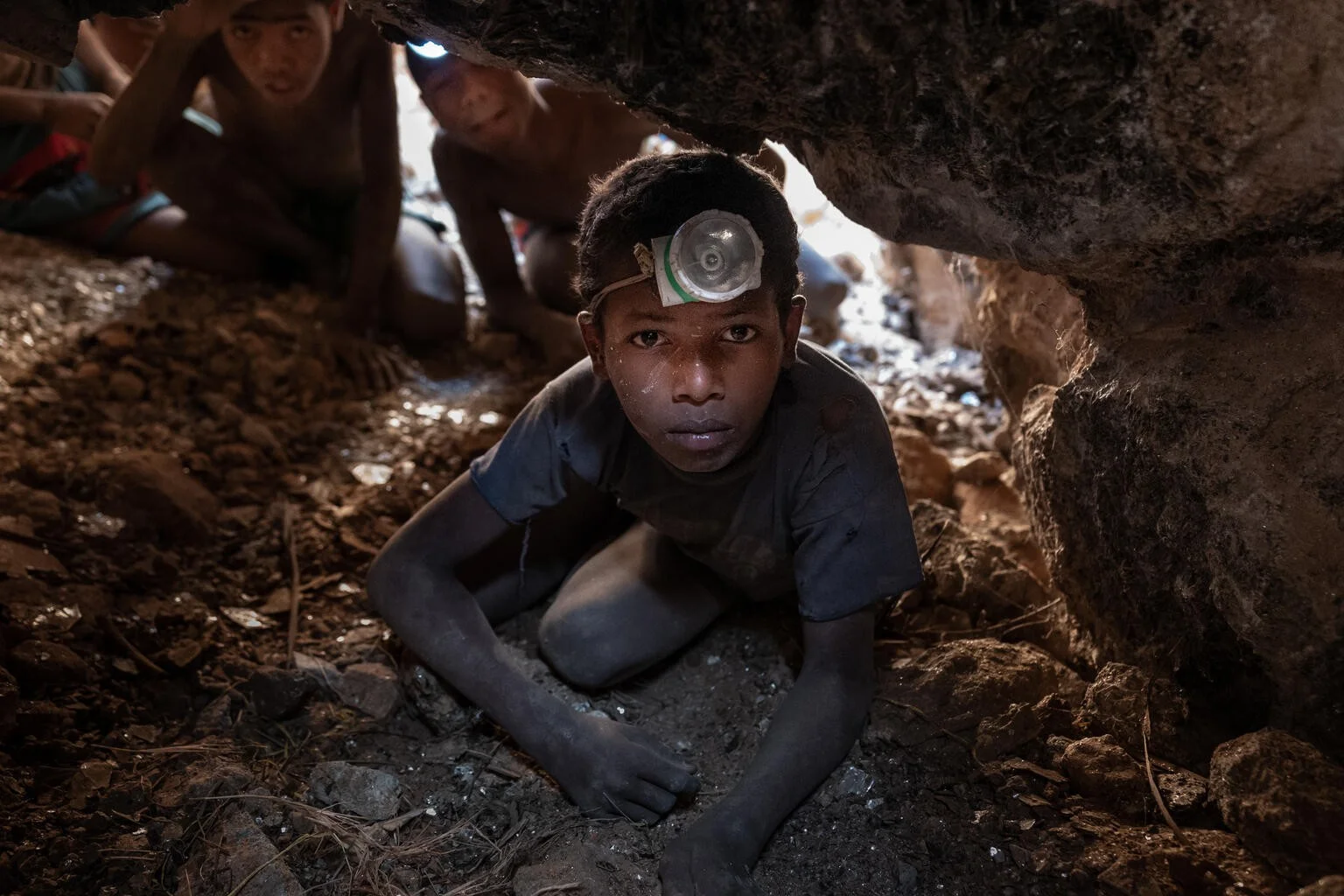Worldwide, the number of children involved in child labor is still 160 million. The new publication “Tackling Child Labor: A Guide for Financial Institutions” provides guidelines for financial institutions on how they can combat child labor through targeted measures. It highlights the importance of wide-ranging risk indicators, improved engagement with portfolio companies and participation in multi-stakeholder initiatives.
In spite of decades of efforts on the part of various stakeholders, 160 million children worldwide are still involved in child labor. Children work under extremely burdensome conditions, often to the point of complete exhaustion. They carry heavy baskets of cacao beans, spray pesticides, sew for many hours in textile factories, smash stones, or work at night. Some of these children attend school, but many are too exhausted from working so hard to pay attention in class.
Many companies reliant on international supply chains, for example in the textile, mining and agricultural sectors, are aware of the negative impact on child rights and the associated risks for their company, and actively work on improving the situation. But what is the role played by financial institutions in the fight against child labor? And how can they reinforce their corporate clients’ efforts in the fight against child labor?
Financial institutions have significant sway when it comes to child rights and thus also the fight against child labor. They can affect the real-economy practices pursued by the companies in which they invest or with whom they work together in their capacity as lender or insurer, and exert pressure on these corporate clients. They can also respect child rights in the context of their own business activities.
The publication “Tackling Child Labor: A Guide for Financial Institutions” published in April 2024 by Shift, UNICEF and the Centre for Child Rights and Business takes an in-depth look at this situation. Financial institutions are advised to use their influence on their clients to promote the well-being of children, not only by complying with the applicable regulations, but also by developing and implementing measures that promote respect for child rights and help to abolish child labor.
The guide specifically highlights three ways in which financial institutions can strengthen their due diligence obligations with regard to child labor and improve their current approach to addressing the risks associated with child labor in accordance with the United Nations Guiding Principles on Business and Human Rights.
- Improve screening for indicators of child labor risk by using a wider range of indicators that also take account of the root causes for child labor (e.g., a lack of decent working conditions for parents and young people, an absence of living wages for employees, a lack of gender equality and childcare options).
- Improve engagement with portfolio companies
The guide advises financial institutions to ask better, more realistic questions and set better expectations concerning due diligence of portfolio companies, thus ensuring a better understanding of the actual risks facing a company and its approach to risk mitigation. For example, instead of asking “Do you have a ’zero-tolerance’ policy on child labor?”, the questions, particularly in problematic sectors, should be “When was the last time you identified child labor?” and “What did you do?” - Participate in multi-stakeholder initiatives that include various measures to combat child labor. As value chain participants connected to these impacts via their portfolio companies, financial institutions should consider their own participation in relevant multi-stakeholder initiatives so as to join forces with other players in the fight against child labor. There are different initiatives, depending on the sector, e.g.,the Financial Institutions Task Force of the Roundtable on Sustainable Palm Oil (RSPO) or collaborations in the cacao bean industry.
As set out in the United Nations Guiding Principles on Business and Human Rights and the OECD’s Due Diligence for Responsible Corporate Lending and Securities Underwriting, the responsibility of financial institutions to respect human rights also includes the activities and value chains of their clients. Most financial institutions therefore have clear guidelines regarding the companies and sectors in which they may invest and to which they may grant loans. Many financial institutions also do not permit any transactions with clients that present a high risk of child labor.
As explained by a study published in 2023 by the Centre for Child Rights and Business, a zero-tolerance policy on child labor can also have negative effects on the actual situation on the ground. As child labor is often endemic in high-risk sectors – such as agriculture and mining – companies should be encouraged to engage actively and introduce improvement through their business practices, rather than terminate collaboration with high-risk partners.
UNICEF Switzerland and Liechtenstein and the UN Global Compact Network Switzerland and Liechtenstein (GCNSL) are currently working on a study about the impact of the financial industry in Switzerland and Liechtenstein on the rights of children. The study investigates how financial institutions can design their products and services so as to reduce the negative effects and strengthen the positive effects on child rights when working together with their clients and investors in the real economy. On the basis of desktop research and interviews with selected financial institutions, the study will also suggest practical measures and recommendations. Publication is planned for autumn 2024.
What is child labor?
International human rights and labor standards define child labor as work that deprives children of their childhood, their potential and their dignity, and is harmful to their physical and mental development – including work that interferes with their schooling and education. The term child labor does not, however, apply to all activities carried out by children under 18. For example, children may often do light work from the age of 13 (or older, depending on national laws) or work full-time from the age of 15 (or older, depending on national laws), provided that the work is not deemed to be dangerous or falls under the worst forms of child labor.
